From the July/August 2025 issue of Apollo. Preview and subscribe here.
Emily Kam Kngwarray’s painting ‘Mern angerr’ may look like an abstract painting. But, as Kelli Cole of the National Gallery of Australia explains, it’s a masterful piece of storytelling about the landscape and traditions of her Aboriginal community in central Australia.
Emily Kam Kngwarray, whose work is the subject of a major retrospective at Tate Modern this month, was an Aboriginal woman from a part of central Australia called Utopia, which is 240km north-east of Alice Springs in the Northern Territory. In the late 1970s, when Kngwarray was in her mid sixties, educational classes for women were brought to her community by the linguist Jennifer Green. The classes started with mathematics and English, and later the women were introduced to batik – the process of applying hot wax and dye on to fabric. Eleven years later, Rodney Gooch, an art advisor working for the Central Australian Aboriginal Media Association, brought 100 canvases to the women of Utopia. Kngwarray produced her first acrylic painting, Emu woman, in 1988–89. From the first moment that she put a brush to canvas, it was clear that her work was distinct.
In this new medium Kngwarray was prolific and she went on to produce thousands of paintings and works on paper over the next eight years until her death in 1996. This large-scale work, Mern angerr, was painted in 1992 and shows a departure from the more iconographical elements of Emu woman, which has clear lines and a strong tie to the styles of batik. In Mern angerr, there is a fluidity to how Kngwarray highlights the elements of the landscape that surrounded her. Kngwarray was an Elder in her community, the Anmatyerr people, and the name of her Country – the term used to describe the lands, skies and waterways to which Aboriginal peoples are intrinsically connected – is Alhalker.
Mern angerr translates as ‘many important plant foods’. When you understand Alhalker Country, where these plants and foods grow, you sense how important these were to Kngwarray. She grew up on her Country, surrounded by several small homelands. At the centre was a community shop, but everything was focused on the Country. This deep connection to the Country is fundamental for Aboriginal people. It’s a connection many have sought to reclaim since the colonisation of Australia, which led to widespread removal from ancestral lands. Kngwarray’s intimate relationship with her Country is powerfully reflected in this artwork. It depicts the very land she knew she was responsible for caring for, which included the plants and animals.
Extensive collaboration with Kngwarray’s descendants has provided crucial insights into the meaning of the colours employed in her art. In paintings such as Mern angerr, they can represent a particular plant or animal, a place or a passage in time. Here, the colour palette is drawn from the plants that Kngwarray and those in her community were eating. The vivid yellow represents the colour of the vines of the anwerlarr, or pencil yam, which take on this hue as the leaves dry out. When they turn this colour, the tuber is ready to eat.

Mern angerr (1992), Emily Kam Kngwarray. Photo: Vincent Girier Dufournier; courtesy Fondation Opale, Switzerland; © Emily Kam Kngwarray/copyright agency; licensed by DACS 2025
It was important to Kngwarray how the pencil yam grew and transformed, because she was named after the seedpods that grow on the plant’s vine beneath the ground. ‘Emily’ wasn’t given to her until she was around 10 to 13 years old; Kam is a name that was given to her at birth by her grandfather; and Kngwarray is her skin classification name – a name that identifies how she fits into the community.
She spoke about this connection directly, in 1992: ‘I paint my plant, the one I am named after – those seeds I am named after. Kam is its name. Kam. I am named after the anwerlarr plant. I am Kam!’
As you step in front of this painting, taking in its yellows, reds and spots of white, you’re drawn to particular parts. It has such a depth to it. Each time you glance again, your focus moves to something else, right up to the edges of the canvas. That’s the push and pull of Mern angerr. The vibrancy of the work makes it feel alive. The small white dots spotted across the canvas are like pearls, giving the painting a luminosity. In the centre, just to the left, there’s a wash of a lilac purple, which works because of the way it blends with the white of the dotting. There’s so much to the work – there are parts that run up and down; there are roundels. A compelling question arises when observing Kngwarray’s work from this period: what was her foundational colour? Did she begin with the vibrant yellow, or was it the red, seemingly dotted over the surface? The painting itself is a dense accumulation of colour, billowing with its rich layers.
This painting was created during a time that Kngwarray was also producing her monumental The Alhalker suite (1993). This work can be seen as a companion piece to that 22-piece series, as both offer a kaleidoscopic view of Country. In Mern angerr, we see how the colours of the plants change through the seasons. In The Alhalker suite, we see shifts between seasons, years, time: this work is a microcosm of what Kngwarray’s Country encompasses. Out here in the central desert, the landscape is defined not by urban sprawl but by vast, endless skies that dominate the horizon. This is a Country intimately known, passed down through countless generations.
The Altyerr (Dreamings) and stories have been passed on, but they’re not just stories; they speak to an obligation to the land that has been passed on to living family members. When members of Kngwarray’s community talk about Mern angerr, they are talking about the ecosystems of Alhalker Country. They’re talking about their understanding of place, the arid zones, where the permanent water sources are – everything that Kngwarray painted now belongs to them. That’s why we called the iteration of this exhibition at the National Gallery of Australia a ‘living retrospective’. What Kngwarray painted is still alive and imbued with this spirit, not just of the Ancestors, but of herself as well.
This painting celebrates the abundance of Alhalker Country. It speaks to the vital role of ceremony, performed to ensure the health and vibrancy of Country. This reciprocal relationship, where Country gives back as you nurture it through ceremony, was central to Kngwarray’s life. As an Elder of her community, she held significant responsibility for these ceremonies. In her later awely paintings, such as those exhibited at the 1997 Venice Biennale (the year after her death), you can truly feel the energy of song in the repetitive brushstrokes. These works, which are based on traditional body painting patterns, evoke the rhythmic movement of women dancing, a palpable sense of life within the art.
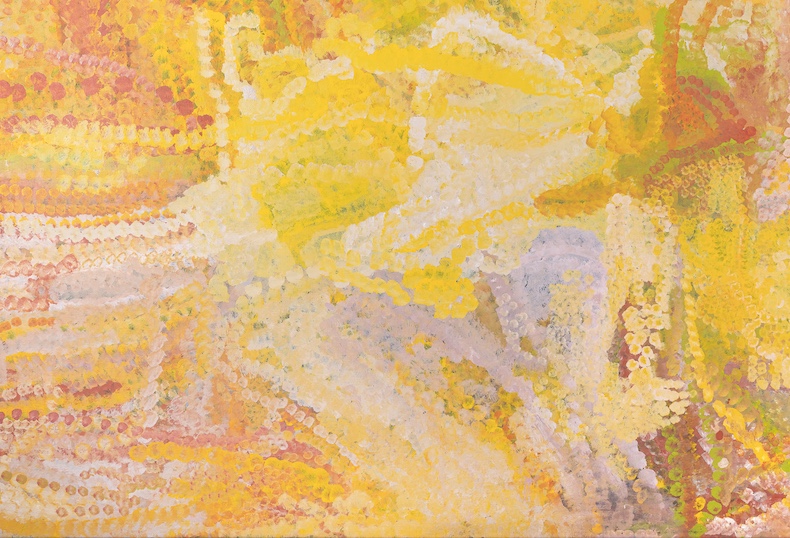
Mern angerr (1992; detail), Emily Kam Kngwarray. Photo: Vincent Girier Dufournier; courtesy Fondation Opale, Switzerland; © Emily Kam Kngwarray/copyright agency; licensed by DACS 2025
While her paintings may not have involved much outward pre-planning, the designs were fully formed in her head. It’s not abstract in any form: Kngwarray knew exactly what she was referring to, whether that be the vines of the pencil yam or the changing of the seasons. Some say that 1988 or ’89 marked the first time she ever painted, but she had been putting natural ochre pigments on her own body and on those of younger women for years. As a senior woman in her community, that was her role: to paint everybody up for ceremonies – breast, chest and arms. So when it came to canvases she had this familiarity and she wasn’t influenced by others. Even though artists in communities like Papunya were creating works in the 1970s, Kngwarray’s remote location meant she was separate from them. Her artistic style emerged from the fluid lines and movements of traditional body painting and her surrounding Country, Alhalker.
When Kngwarray was working on a canvas, she was always surrounded by family and other female community members. This included her closest friend and confidante, Ada Bird, Lily Kngwarrey and other artists such as Gloria Petyarre, who were part of the group of women working alongside Kngwarray in the late 1980s. They started painting together then, and just continued to paint, coming together in Alice Springs, producing paintings for Rodney Gooch. Later Kngwarray began painting at Delmore Downs Station. They’d gather under a tree or sit on Rodney’s veranda, the place would be filled with laughter, with people simply doing what people do: eating, drinking and sharing jokes. Kngwarray herself was known for her humour and wit.
Kngwarray had a clear working method. She would complete a canvas, declare, ‘I’m all done,’ and move on. While her simpler line paintings might have been quick to finish, a complex work like Mern angerr could have taken days. Without electricity on Country, she was limited to painting from sunup to sundown. Even so, this painting, created just four years before her passing, shows her immense energy. She continued to work through rolls and rolls of canvas with absolute excitement.
When her descendants look at her paintings, they talk about telling the truth. Every painting included in this exhibition has been shown to them and they have provided us with interpretations of Kngwarray’s work. For her descendants, the art is a living narrative. They see the designs, comprehend the stories and know precisely where a waterhole is, or which marks recount the journey of the two emu brothers across Country. Kngwarray was a master storyteller, weaving her narratives into the very fabric of the paintings and batiks we now have the privilege to enjoy.
As told to Lucy Waterson.
‘Emily Kam Kngwarray’ is at Tate Modern, London from 10 July–11 January 2026.
From the July/August 2025 issue of Apollo. Preview and subscribe here.


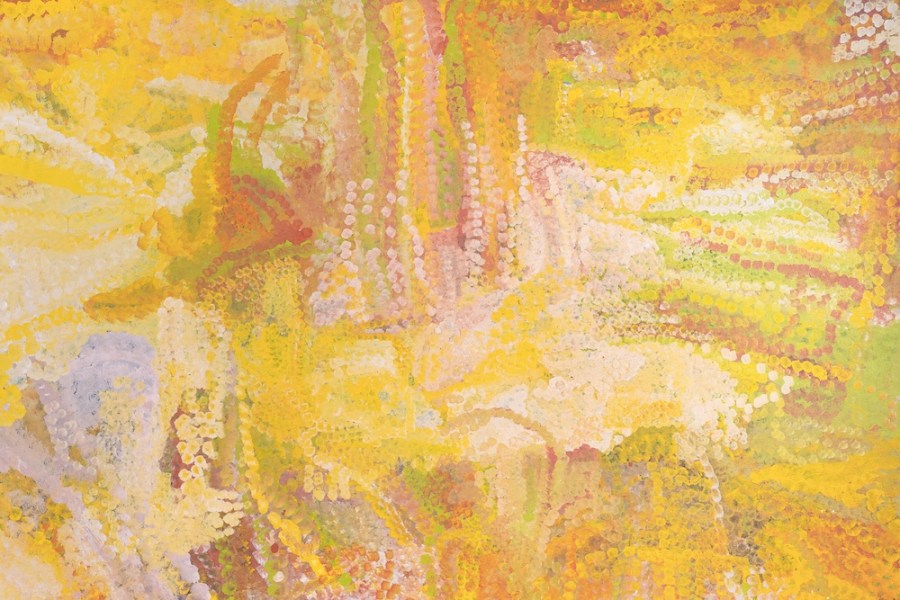






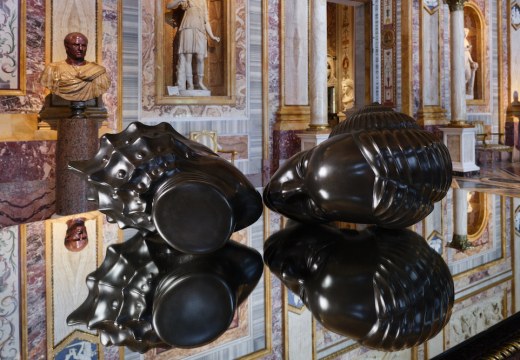

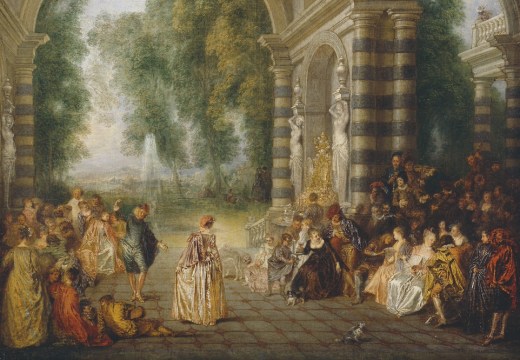
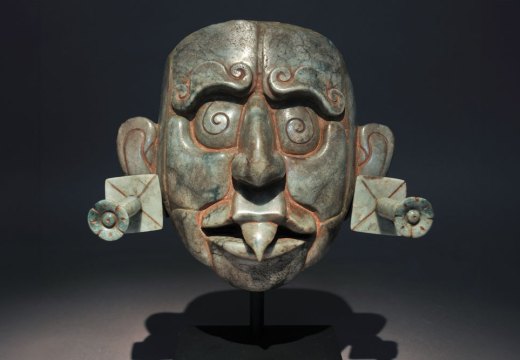

![Masterpiece [Re]discovery 2022. Photo: Ben Fisher Photography, courtesy of Masterpiece London](https://apollo-magazine.com/wp-content/uploads/2022/07/MPL2022_4263.jpg)
Wangechi Mutu gets reflective at the Galleria Borghese